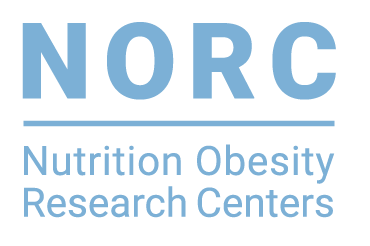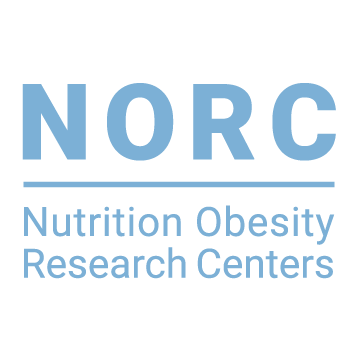Pennington Biomedical Research Center
Steve Hennigar, PhD
Assistant Professor
Pennington Biomedical Research Center
Dates of Funding: 2023-2024
Mediating effects of hepcidin on increased rates of anemia during prolonged caloric restriction
Comprehensive Assessment of Long-Term Effects of Reducing Intake of Energy (CALERIE) was a two-phase clinical trial that studied the effects of caloric restriction (CR) in humans. In both phase 1 and phase 2 of CALERIE, participants in the CR group had lower hemoglobin, hematocrit, and serum iron compared to the control group, suggesting increased rates of iron deficiency and anemia with CR. Interestingly, this was despite consuming a multivitamin and mineral supplement containing iron. A similar phenomenon has been reported in undernourished populations who have high rates of anemia and are refractory to iron supplements. Recent data from our lab demonstrates that increased rates of anemia with CR may be due to increases in the iron regulatory hormone hepcidin. These data show that hepcidin increases with even mild-to-moderate CR, which inhibits dietary iron absorption and recycling, leading to an iron restricted anemia. This NORC P&F study will determine the effects of CR compared to energy balance on hepcidin and whether the effect of CR on indicators of iron status is mediated by changes in hepcidin in CALERIE-2 participants. Findings from this study could suggest that increased rates of anemia with CR are due to increases in hepcidin, and lead to future work to determine iron requirements and interventions to mitigate the anemia that develops with CR.
Redin A. Spann, PhD
Postdoctoral Researcher
Neurosignaling
Pennington Biomedical Research Center
Dates of Funding: 2023-2024
Neurodevelopment of hindbrain metabolic circuits in a mouse model of intrauterine growth restriction
Intrauterine Growth Restriction (IUGR) is a serious gestational issue that can have an adverse impact on the health of the child for the remainder of their life. Infants that are born small-for-gestational age (SGA) because of growth restriction are at a greater risk for metabolic disease. It is unclear, however, why those that experience IUGR are more likely to become obese and suffer neurodevelopmental delays. While some research exists showing that the hypothalamus, the central regulator of energy homeostasis, is changed post-IUGR, little attention has been paid to the brainstem. This area is also essential for feeding and thermogenic behavior and is where many signals to and from the periphery are processed.
IUGR is a result of malnutrition or hypoxia, but this does not explain the fetal programming mechanisms that result in aberrant weight gain in adulthood even when catch up growth has been achieved. One possibility is that gut hormones that respond to nutrient deficiency play a part. Work in the Morrison lab has identified FGF21 as a hormone sensor of dietary protein that signals to neurons in the brainstem. FGF21, then, is well positioned to perform a crucial role in the development of these sensory neurocircuits. Limited knowledge exists about the role of FGF21 during development, however, it is known that FGF21 rises during pregnancy in both humans and rodents and is expressed in the placenta and fetal liver. We hypothesize that during low-protein-induced IUGR, FGF21 levels will be abnormally high and alter neural development in the brainstem. We will use a mouse model of growth restriction and FGF21 receptor knockout mice to better understand FGF21’s significance in neurodevelopment as well as the pathophysiology of obesity following IUGR.

Joshua Sparks, PhD
Postdoctoral Researcher
Reproductive Endocrinology and Women’s Health
Pennington Biomedical Research Center
Dates of Funding: 2023-2024
A Pilot Study to Examine Metabolic Flexibility as the Mechanism to Understand High-Fat Diet-Induced alterations to male Epigenetic Markers of Obesity
In a twenty-year period from 1999 to 2020, obesity in the United States (US) increased from 30.5% to almost 42%. In men of reproductive age (20-39 years), the prevalence of obesity is a striking 40.3%. Of importance, obesity impacts an approximate 19.7% of children and adolescents in the US. Observational and longitudinal studies have highlighted that paternal and maternal obesity at conception independently predicted obesity in the child, but the strongest odds were observed when obesity of both parents were considered together. Evidence supports that preconception DNA methylation (DNAm) patterns in male and female gametes are impacted by health behaviors (e.g., diet) that also impact risk for obesity development in the offspring. Yet, male gametes have distinctly unique epigenetic landscapes and may be affected to a greater extent due to diet, owed to high turnover in sperm cells. As such, epigenetic inheritance may originate independently through sperm DNAm. Epidemiological studies in men have shown that exposure to poor diet in one generation can increase the risk for development of obesity in future generations. Yet, there are no diet manipulation experiments in men to test whether an acute exposure to an obesogenic diet produces DNAm of genes in male gametes.
This NORC P&F aims, for the first time, to examine the impact of an acute, controlled 4-day high-fat diet (50% fat) on DNAm in human sperm, while also elucidating mechanisms underlying this change. The proposed study is designed to test the hypothesis that perturbations in substrate flux (i.e., metabolic flexibility) and the circulating metabolic and pro-inflammatory milieus (i.e., glucose, triglycerides, IL-6, and TNFα) will modulate DNAm of genes in sperm following an acute high-fat diet in young, healthy men. To do so, we will utilize inpatient metabolic chambers to determine metabolic flexibility and simultaneously perform a mixed-meal tolerance test to determine the postprandial metabolic and inflammatory milieus. Importantly, we will collect semen and analyze sperm DNAm in collaboration with the Genomic Core at PBRC. Findings from this work will establish a rationale for inclusion of males in research during the preconception period to positively impact intergenerational health.
Carrie Elks, PhD, RD
Assistant Professor
Matrix Biology
Pennington Biomedical Research Center
Dates of Funding: 2022-2023
Contact Information
Carrie.Elks@pbrc.edu • Phone: (225)763-3140
Functions of ‘Creeping Fat’ in Crohn’s Disease
Crohn’s Disease (CD) is a chronic inflammatory bowel disease that can affect any part of the gastrointestinal tract. CD was historically associated with weight loss, malnutrition, and decreased body mass index (BMI). In Baton Rouge and the surrounding areas, CD now occurs with similar frequencies in people with obesity and those of normal weight, with similar trends occurring across the United States. People with obesity are more likely to experience CD complications including the formation of intestinal strictures (sites of abnormal narrowing), decreased time to surgical intervention, ulcerations, and longer post-surgical recovery.
A unique feature of CD is the presence of “creeping fat” (CrF) – fat tissue that wraps around the CD-affected intestine. This CrF is not observed in any other disease state, and its role in CD is not understood. Current dogma describes CrF as an extension of mesenteric adipose tissue (MAT), though several differences suggest that CrF may serve a distinct function.
Our hypothesis is that CrF adipocytes, via direct contact with the CD-affected gut, acquire characteristics that distinguish them from MAT adipocytes, both transcriptionally and functionally. We posit that CrF is a heterogeneous tissue and that CrF adipocyte gene expression and function depend upon a spatial gradient dictated by proximity to the gut. Hence, we expect that adipocytes nearest the inflamed gut are molecularly the most distinct from MAT adipocytes; and the further a CrF adipocyte is from the gut wall, the less molecularly distinguishable it becomes from MAT. Successful testing of our hypothesis requires methodologies that allow us to analyze the spatial gradient of CrF, to distinguish between adipocytes with different proximities to the CD-affected gut. This NORC Pilot and Feasibility award will allow us to establish a methods workflow for the spatial analysis CrF from normal weight CD patients and CD patients with obesity. This represents a major step toward understanding CrF function – by obtaining the molecular profiles of adipocytes at varying proximities to the gut, we can then design future studies to determine what gut factors may be involved in CrF function.
Fatima Rivas, PhD
Assistant Professor
Department of Chemistry
Louisiana State University
Dates of Funding: 2022-2023
Contact Information
frivas@lsu.edu
Synthesis of prenylated coumaric derived natural products as anti-diabetic agents
Close to 42% of the adult American population experience obesity-related metabolic syndrome (MetS)–a group of health conditions, including insulin resistance, glucose intolerance, dyslipidemia, and type 2 diabetes mellitus (T2DM). A high mortality rate among the T2DM patient population has become a global burden, indicating an urgent need for the discovery and development of new therapeutic agents. The identification of the potent benefits of Artemisia scoparia extracts (EAS) against T2DM by Dr. Jackie Stephens at PB, enables the establishment of our drug discovery platform based on this prenylated molecular scaffold against T2DM.
This NORC P&F study will support the total synthesis of one the main components of EAS and establish its pharmacological (maximum tolerable dose and pharmacokinetic and pharmacodynamic properties) potential in murine models. By developing efficient synthetic strategies towards these prenylated compounds, we will access sufficient compound quantities for in vivo murine studies and generate a focused-compound library to better understand these compounds’ mode of action. The resultant data will enable the design of preclinical efficacy studies regarding dosage and in vivo tolerability of these compounds.
Avinash Kumar, PhD
Postdoctoral Researcher
Department of Biological Sciences
Louisiana State University
Dates of Funding: 2022-2023
Contact Information
kumar1@lsu.edu • Phone: (225) 763-2551
Investigating the Role of Particulate Matter Containing Environmentally Persistent Free Radicals in the Pathogenesis of Type 2 Diabetes
Despite growing recognition of the problem, the diabetes epidemic continues in the U.S., and diabetes rates are increasing around the world. Obesity and diabetes are major causes of morbidity and mortality in the United States and major risk factors includes family history, age, excess nutrition, and physical inactivity. In addition to that several epidemiological studies suggest that air pollution is linked to an increased prevalence of diabetes. One of the major constituents contributing to air pollution is Combustion derived particulate matter (CDPM). CDPM often contains a newly realized class of contaminants known as environmentally persistent free radicals (EPFRs). Once inhaled, EPFRs have tremendous potential to produce oxidative stress and can lower energy expenditure and damages skeleton muscle mitochondrial function. However, there is a significant knowledge gap regarding EPFRs exposure and its impact on human health, especially in the pathogenesis of diabetes.
The objective of this NORC pilot grant is to address how EPFRs exposure modifies cellular mechanisms that are integral in maintaining glucose homeostasis and link these to observations made in humans in vivo. To execute the study, we will use a novel murine model of EPFRs exposure and determine changes in whole-body glucose homeostasis and energy metabolism due to CDPM containing EPFRs exposure. The proposed research will, for the first time, directly access the role of EPFRs exposure in glucose homeostasis and the development of a diabetic state. Such a study will be important for shaping public health policy regarding EPFRs exposure and its role in predisposition to the development of metabolic diseases.
 Susan Burke, PhD
Susan Burke, PhD
Assistant Professor
Laboratory of Immunogenetics
Pennington Biomedical Research Center
Dates of Funding: 2021-2022
Contact Information
susan.burke@pbrc.edu • Phone: (225) 763-2532
Defining the role of CD36 in the regulation of pancreatic beta-cell function
Obesity, insulin resistance, and pancreatic b-cell dysfunction are key contributors to the development of type 2 diabetes mellitus (T2DM). Obesity and insulin resistance are associated with consumption of diets that are typically high in sugar and fat content. In the pancreatic islet b-cell, exposure to excess dietary fat promotes excess tissue lipid accumulation, and is proposed to alter b-cell function via inflammatory mediators including lipotoxic lipid species, cytokines, and reactive oxygen species. Loss in b-cell function eventually leads to the development of T2DM.
To date, no in vivo studies have elucidated a direct link between limiting lipid uptake into the cell and pancreatic b-cell function. In this NORC Pilot and Feasibility study, we will employ a novel in vivo model of reduced fatty acid uptake in pancreatic b-cells. We will delete the gene Cd36, which encodes a fatty acid translocase, specifically in the b-cell. This will allow us to test the hypothesis that a reduction in fatty acid translocation into the pancreatic b-cell prevents excess lipid accumulation and inflammatory signaling that is detrimental to islet b-cell insulin secretion. Completion of this project will reveal the critical CD36-dependent events responsible for regulating islet b-cell changes in secretory function during caloric overload, obesity, and insulin resistance.
 Emily Flanagan, PhD
Emily Flanagan, PhD
Postdoctoral Fellow
Reproductive Endocrinology & Women’s Health Laboratory
Pennington Biomedical Research Center
Dates of Funding: 2021-2022
Contact Information
Emily.Flanagan@pbrc.edu
An examination of brown adipose tissue and energy expenditure in infants
The developmental origins of obesity begin in utero with the growth and differentiation of fetal adipose tissue. There are two types of adipose tissue with differing functions: white adipose tissue and brown adipose tissue (BAT). Unlike white adipose tissue, BAT functions as a highly thermogenic tissue which protects against hypothermia in the postnatal environment. The presence and amount of BAT in adults is small and variable with a greater amount in individuals with a lower body mass index. The impact of BAT on energy expenditure in adults is debatable and very modest, at best. Yet, BAT may be a meaningful contributor to energy expenditure in neonates (infants <30 days old) given histological characteristics suggesting a capacity for significant thermogenesis. Despite the known properties and physiological relevance of BAT in neonates, the factors that contribute to BAT mass and activity at birth are not known. Moreover, the extent to which neonatal BAT is activated and stimulates thermogenesis at birth has not been studied.
This NORC P&F will examine maternal and neonatal influences on BAT development and quantify the relationship between neonatal BAT and energy expenditure. Dr. Flanagan is under the advisement of a multidisciplinary team of experts in maternal energy balance (Leanne Redman; PBRC), energy expenditure (Eric Ravussin; PBRC) and BAT (Denis Blondin; University of Sherbrooke). To execute this study, we utilize (a) a novel method of magnetic resonance imaging to assess BAT volume and the lipid to water ratio in BAT (fat signal fraction; FSF) and (b) a state-of-the-art infant metabolic chamber to assess resting energy expenditure under thermoneutral conditions and during a mild cold exposure. Dr. Flanagan and colleagues hypothesize that (1) a mild cold exposure will activate BAT thermogenesis and result in higher rates of neonatal energy expenditure and (2) neonates born to mothers with a lower pre-pregnancy BMI and to women who achieve lower amounts of gestational weight gain will have greater quantity of BAT and a capacity for higher thermogenic activation. The results of this study could elucidate role of BAT on neonatal energy balance and as a protective phenotype against the intrauterine transmission of obesity
 Rebecca Solch, PhD
Rebecca Solch, PhD
Postdoctoral Fellow
Department of Neurology, Lab of Dr. Maraganore
Tulane University School of Medicine
Dates of Funding: 2021-2022
Contact Information
rsolch@tulane.edu
Characterization of a gut microbiota-centered model of mild cognitive impairment
Mild cognitive impairment (MCI) negatively impacts 15-20% of adults 65 years or older. Problematically, MCI has no cure indicating a need for preventative therapies. One such therapy may stem from the gut microbiota as it has the ability to directly influence cognitive function. Further, patients with MCI have a dysbiotic gut microbiota compared to healthy individuals. As a person’s gut microbiota is directly modulated by diet, adherence to a nutrient rich diet, such as the Mediterranean diet (MeDi), may reduce the risk of MCI by maintaining gut eubiosis. Therefore, there is a need to explore microbiota-based therapies for prevention of MCI.
This NORC P&F study will elucidate the effects of MeDi-modulated fecal microbiota transplantations on cognitive function, gut microbiota, intestinal and blood-barrier integrity, and immune function in F344 rats. This study will be conducted leveraging the expertise of Dr. Maraganore (Tulane University) and Dr. Engler-Chiurazzi (Tulane University). Animals will be fed a Mediterranean or Western diet, weighed weekly, and have fecal samples collected monthly for 16s rRNA sequencing by Dr. Salbaum (PBRC). After three months on the diet, some groups will receive weekly fecal transplantations for two months. Following, animals will undergo a battery of cogntive assessments (i.e., Y-maze, Morris water maze, radial arm water maze) and be euthanized where blood and tissues will be collected. The results from this study may identify a unique preventative therapeutic for MCI prevention
 Tim Allerton, PhD
Tim Allerton, PhD
Postdoctoral Researcher, Adipocyte Biology
Pennington Biomedical Research Center
Dates of Funding: 2020-2021
Contact Information
tim.allerton@pbrc.edu
The Effect of Altered Nitric Oxide Bioavailability on the Interaction of Obesity and Alzheimer’s Disease
Both obesity and Alzheimer’s Disease (AD) are associated with significant cardiometabolic complications that reduce the length and quality of life. The metabolic dysfunction that occurs during obesity, such as type 2 diabetes, increases the risk of developing AD by as much as 50%. Hence, understanding the mechanistic link between obesity and AD is essential to develop novel therapeutic strategies for the prevention and treatment of AD. Among the shared pathologies between obesity and AD is reduced endothelial function that occurs because of reduced nitric oxide (NO) bioavailability. The loss of NO function in obesity causes reduced microvascular blood flow to peripheral tissue and the brain. Likewise, in AD, there is reduced cerebrovascular blood flow that likely has several negative effects including the enhanced deposition of β-amyloid (Aβ) and eventual cognitive decline.
Hypothalamic mitochondrial dysfunction has been also shown to be involved in the early stages of Aβ plaque formation and is considered the primary site of metabolic dysfunction in animal models of AD. Mitochondrial biogenesis can be increased in a NO-dependent manner. Whereas other data show overproduction of NO, as a result of chronic inflammation, can inhibit mitochondrial function. The functional role of NO in AD and obesity remains a major knowledge gap in the metabolic/vascular contributions to AD-related cognitive decline.
In this NORC Obesity and Alzheimer’s Disease and Related Disorders (ADRD) Pilot and Feasibility study, we will examine the effects of increased versus decreased NO bioavailability in an obese mouse model of AD – APPswe/PS1dE9 (APP/PS1) mice. We will include the amino acid L-citrulline or Nγ-nitro-L-arginine methyl ester (competitive inhibitor) in the drinking water to increase or decrease NO bioavailability, respectively. We will assess cerebrovascular blood flow using a non-invasive near-infrared spectroscopy approach. Behavioral assessments will be performed throughout our 6-month study using a delayed matched-to-position task. Finally, we will perform high-resolution respirometry on hypothalamic homogenates to assess mitochondrial function. Drs. Paul Soto (behavioral psychology) and Brian Irving (mitochondria function) will contribute their respective expertise to the completion of the study aims. Dr. Jacqueline Stephen will serve as the primary mentor on this project. The results of this study will offer insight into the nature of NO function in obesity and its impact on AD-related mitochondrial dysfunction.
 Kathryn Gwizdala, PhD
Kathryn Gwizdala, PhD
Postdoctoral Researcher, Physical Activity & Ethnic Minority Health
Pennington Biomedical Research Center
Dates of Funding: 2020-2021
Contact Information
Kathryn.Gwizdala@pbrc.edu
Food Intake and Intra-Nasal Insulin for African-American Adults
Over 5 million Americans have Alzheimer’s Disease (AD) with the total projected to reach 14 million by 2060. Because diabetes and obesity are major risk factors for AD, and cerebral glucose hypometabolism is an AD hallmark, central insulin dysregulation as a driver of AD pathological pathways is under intense scrutiny. Besides AD pathology, central insulin dysregulation disrupts neural signals underlying feelings of fullness, hunger, and satiety, thus contributing to overeating.
Increasing central insulin availability via an intranasal exogenous insulin spray is hypothesized to correct central insulin dysregulation. Such sprays have been shown to preserve cognitive function among individuals diagnosed with, or at risk of, AD with minimal effects on peripheral insulin status. However, the metabolic and ingestive behavior effects of intranasal insulin sprays among AD patients or at-risk groups are not well understood. This is especially true among African Americans who are underrepresented in research and face disparities in metabolic diseases and AD.
This NORC P&F study will measure the effects of intranasal insulin on acute food intake and ingestive behavior psychological constructs among African American adults. We will utilize a double-blind, placebo-controlled, randomized crossover design to compare a single acute dose of intranasal insulin to saline placebo. Additionally, family history of AD, APOE genotyping, and adiposity (i.e., DXA) will be collected to assess how these factors influence intranasal insulin effects on caloric intake and ingestive behavior constructs. This could be the first step towards larger-scale studies of brain insulin effects on metabolism and AD in under-served populations. Importantly, it leverages the unique metabolism resources of the NORC and establishes a new research method at PBRC that could enhance the research environment.
 Kara Marlatt, PhD
Kara Marlatt, PhD
Assistant Professor – Research, Healthy Aging & Metabolism Lab
Pennington Biomedical Research Center
Dates of Funding: 2020-2021
Contact Information
kara.marlatt@pbrc.edu • Phone: (225) 763-2871
Physical Activity and Cognitive Function in Older Adults: A Novel Role for GPLD1?
Lifelong physical activity is consistently associated with reductions in premature cardiovascular mortality and metabolic disturbances (e.g., hypertension, hypercholesterolemia, and type 2 diabetes). Indeed, insufficient levels of moderate-to-vigorous physical activity is routinely associated with reductions in average lifespan. Higher levels of physical activity may also reduce risk for cognitive decline in the elderly.
Exciting findings recently published in Science by Horowitz et al. showed that transferring circulating blood factors in plasma from exercised aged mice to sedentary aged mice mimicked the effects of exercise on the recipient’s neurogenesis and cognition. These investigators observed that plasma concentrations of glycosylphosphatidylinositol (GPI)-specific phospholipase D1 (GPLD1), a GPI-degrading enzyme produced by the liver, increase after exercise and correlate with improved cognitive function in aged mice. Whether increased physical activity level and plasma GPLD1 concentration are associated with higher cognitive function and brain structure and function has yet to be explored in humans. An association would be a first step towards an exciting investigation of GPLD1 as a therapeutic target for sustaining cognitive function late in life.
Therefore, we propose to conduct a cross-sectional observational study to investigate whether plasma GPLD1 concentrations are associated with higher cognitive function and better brain structure and function (via structural and functional MRI) in older adults. We will enroll up to 24 healthy, older adults (ages 65-85 y, BMI 20-35 kg/m2) stratified by current physical activity level. Physical activity status will be determined by the Rapid Assessment of Physical Activity (RAPA) questionnaire and confirmed by 7-day accelerometry. Once enrolled, plasma concentrations of GPLD1, as well as cognition, brain structure and function, body composition, and resting energy metabolism (metabolic rate and fat oxidation) will be assessed. Our overarching hypothesis is that higher levels of physical activity will be associated with higher circulating GPLD1 and better cognitive function and brain structure and function.
 Yanlin He, PhD
Yanlin He, PhD
Assistant Professor, Brain Glycemic and Metabolism Control
Pennington Biomedical Research Center
Dates of Funding: 2020-2021
Contact Information
Yanlin.He@pbrc.edu • Phone: (225) 763-2815
Asprosin activates AgRP neurons through SK3 ion channel via sigma-1 receptor
Normal feeding behavior is essential for survival and homeostatic control of energy balance. Aberrant feeding is associated with obesity and eating disorders (e.g. anorexia nervosa and binge eating disorder). These medical conditions constitute a major health issue to western societies. Hypothalamic agouti-related peptide (AgRP) neurons are essential for normal feeding behavior, and thus there is substantial interest in defining their functional regulation.
My earlier data demonstrated that AgRP neurons express high levels of the small conductance calcium-activated potassium channel 3 (SK3) and that SK3-channels inhibit neural firing. We also observed that food deprivation reduced SK3 expression in AgRP/NPY neurons and that this decrease in SK3 activity contributed to fasting-induced increases in AgRP neuron activity. Therefore we have identified a novel neural mechanism that controls the activity of this important neural population. Importantly, my Nature Medicine paper reported that the newly discovered hunger hormone asprosin regulated food intake by directly activating AgRP neurons. Since obese humans and animals have high asprosin in circulation, these data suggest that AgRP neurons may contribute to asprosin-dependent changes in food intake. However, the mechanism through which asprosin activates AgRP neurons is unclear.
In this NORC Pilot and Feasibility study, we hypothesis that asprosin acts via the sigma-1 receptor and SK3 channel to activate AgRP neurons, resulting in increases in food intake. This proposal will seek to directly test this overarching hypothesis. I will first generate mice with conditional deletion of SK3 in AgRP neurons, and use them to test if SK3 is required for normal AgRP neuron activity, feeding behavior, and asprosin responsivity. I will also test if blocking sigma-1 receptors blocks asprosin’s effect on food intake in WT but not SK3 KO mice. Importantly, these studies will combine in vitro electrophysiological analysis of the mechanisms underlying neural activity with functional in vivo measures of mouse feeding behavior. Ultimately, this project focuses on a fundamentally novel mechanism to explain the mechanism mediating the effects of the new feeding-related hormone asprosin, while also testing a novel mechanism regulating AgRP neuron activity.
 Prachi Singh, PhD
Prachi Singh, PhD
Associate Professor, Clinical Science
Pennington Biomedical Research Center
Dates of Funding: 2020-2021
Contact Information
Prachi.Singh@pbrc.edu • Phone: (225) 763-3151
Metabolic effects of metformin therapy in obstructive sleep apnea
Obstructive sleep apnea (OSA) is an established independent risk factor for diabetes and cardiovascular disease. Standard OSA treatment with positive airway pressure (PAP) is efficient in eliminating pathological intermittent hypoxia but shows inconsistent reduction in insulin resistance and metabolic risk factors. This underscores the need for development of therapeutic augmentation strategies aimed at improving insulin sensitivity and metabolic profile in OSA.
The modest effects of PAP therapy in OSA patients partly result from poor compliance but also suggest presence of underlying mechanisms which do not resolve with elimination of intermittent hypoxia. Chronic intermittent hypoxia mediated increased cellular senescence presents as a convincing underlying mechanism for persisting metabolic risk in PAP treated OSA patients. Cellular senescence entrails irreversible growth arrest and secretome changes through which senescent cells can cause tissue dysfunction and promote senescence in neighboring cells as well. Notably, increased cellular senescence is a recognized mechanism for development of metabolic disorders such as obesity and diabetes. We propose that adjunct metformin therapy will reduce the persisting cellular senescence in PAP treated OSA patients to improve tissue insulin sensitivity and metabolism.
In this NORC Pilot and Feasibility study, we will examine the efficacy of metformin to consistently improve whole-body, skeletal muscle, and adipose tissue insulin-sensitivity along with longitudinal assessment of tissue senescence burden and glucose metabolism. Towards this goal, we have brought together a multidisciplinary team including Drs Noland and Gadde. We will conduct a 3 month double-blind, placebo-controlled, randomized clinical trial in non-diabetic OSA subjects using PAP therapy. We will also examine other recognized metabolic risk factors including body composition, lipid profile, and blood pressure in our study participants. Our findings will provide a strong framework for a future clinical trial to comprehensively evaluate the ability of metformin based adjunct therapy to restore metabolism in OSA patients. We seek to shift the clinical practice paradigm in OSA from preventing IH to resolving underlying mechanisms which may contribute to detrimental metabolic consequences of OSA.
 Kara Marlatt, PhD
Kara Marlatt, PhD
Assistant Professor – Research, Healthy Aging & Metabolism Lab
Pennington Biomedical Research Center
Dates of Funding: 2019-2020
Contact Information
kara.marlatt@pbrc.edu • Phone: (225) 763-2871
The effect of sleep restriction on adipose tissue and skeletal muscle insulin sensitivity
Inadequate sleep is an independent risk factor for metabolic abnormalities, including obesity, insulin resistance, and hyperglycemia. Women report the most sleep disruption during the menopause transition (perimenopause) and into the postmenopausal years. In fact, sleep disruption is one of the primary reasons why midlife women seek medical care, with up to 60% reporting significant sleep disturbances (e.g., trouble falling asleep, early morning waking). Despite most women experiencing sleep disruption in midlife, most sleep manipulation trials have been conducted in healthy men (not women). Furthermore, no study has investigated the molecular mechanisms linking sleep disruption and the changes in metabolism that coincide with menopause. Understanding these molecular mechanisms is the first step to the development of feasible treatment modalities that target sleep optimization and circadian function in midlife women.
In this ongoing NORC P&F study, we are conducting a randomized, crossover trial investigating the effect of sleep restriction compared to habitual sleep on adipose tissue and skeletal muscle insulin sensitivity in vivo and ex vivo. Notably, our study leverages the expertise of several key Pennington investigators, including Dr. Prachi Singh (sleep), Dr. Jacqueline Stephens (adipose tissue), Dr. Robert Noland (skeletal muscle), and myself (midlife women’s health and metabolism). To accomplish our goals, we are randomizing up to 10 healthy, postmenopausal women with ≥7 hours of self-reported habitual nightly sleep to 4 consecutive nights of sleep restriction and habitual sleep. At the end of each sleep treatment, we are administering a two-step hyperinsulinemic-euglycemic clamp and are collecting skeletal muscle and adipose tissue biopsies. The overarching hypothesis is that sleep restriction will reduce adipose tissue and skeletal muscle insulin sensitivity compared to habitual sleep. Importantly, our findings will provide a strong framework for future clinical trials that investigate the effect of sleep disturbances on midlife women and allow us to define customized treatment strategies that target sleep optimization with the goal of improving metabolic health in these women.
 S. Nicole Fearnbach, PhD
S. Nicole Fearnbach, PhD
Assistant Professor – Research, Clinical Science
Pennington Biomedical Research Center
Dates of Funding: 2019-2020
Contact Information
nicole.fearnbach@pbrc.edu • Phone: (225) 763-2612
Race differences in post-exercise energy expenditure and substrate oxidation in adolescent girls
Adolescent girls represent a population at increased risk for obesity, with African-American girls disproportionately affected by this condition. The high-risk period for weight gain during adolescence is typically accompanied by a decrease in physical activity and increase in sedentary time, which drive a decrease in total energy expenditure. Previous studies have shown that, relative to White individuals, African-Americans have lower resting energy expenditure. Girls also tend to have lower energy expenditure compared to boys. Therefore, the widespread reductions in activity levels throughout adolescence may be more detrimental to energy balance in African-American girls. Regular exercise is one popular preventive strategy to promote an increase energy expenditure and establish healthy habits in this population. However, not all individuals respond favorably to imposed exercise, as demonstrated by substantial heterogeneity in weight loss from exercise programs. Individual differences in post-exercise eating behavior have been extensively documented in adults, with some participants reporting an increase in subjective appetite and demonstrating increased energy intake. There is a potential role for substrate oxidation to explain this phenomenon. Enhanced carbohydrate oxidation at rest or during exercise has been associated with an increase in appetite and ad libitum energy intake, as well as weight gain. Interestingly, African-Americans tend to have a higher respiratory quotient (RQ) (i.e., oxidize more carbohydrate relative to fat stores), but race differences in the interaction between carbohydrate oxidation and appetite have not been investigated. In addition, there is seldom research on this topic in youth. Reduced energy expenditure plus enhanced appetite resulting from higher carbohydrate oxidation may put African-American girls at a greater risk for positive energy balance.
We therefore propose to examine race differences in total energy expenditure and RQ during and after exercise, and their relation to subjective appetite, as potential physiological contributors to disparate obesity risk in adolescent girls. This pilot study will enroll 20 adolescent girls (10 African-American, 10 non-Hispanic White) between 13-17 years of age who are classified as overweight. We will measure 24-hour energy expenditure and substrate oxidation in a metabolic chamber, with a controlled bout of exercise matched for intensity and energy expenditure across participants. Meals will be individually prescribed to maintain 24-hour energy balance, and subjective appetite will be measured throughout the observation period.
 Susan Burke, PhD
Susan Burke, PhD
Assistant Professor – Research, Immunogenetics
Pennington Biomedical Research Center
Dates of Funding: 2019-2020
Contact Information
susan.burke@pbrc.edu • Phone: (225) 763-2532
Does inhibition of Cpt1 activity in pancreatic cells enhance insulin secretion?
Obesity, insulin resistance, and pancreatic β-cell dysfunction are fundamental contributors to the development of type 2 diabetes mellitus (T2DM). During obesity, the number of pancreatic islet β-cells increases in response to peripheral demand for insulin (i.e., insulin resistance), with compensatory insulin hypersecretion. The mechanisms associated with these adaptive changes are not completely understood. We propose that mitochondrial lipid overload may be a key contributor to these phenotypes.
In this NORC Pilot and Feasibility study, we propose that as the lipid burden increases such as occurs during obesity, islet β-cells adapt to rely on increased oxidation of fatty acids. As obesity worsens, tissue lipid storage results when lipid supply exceeds oxidative capacity of the mitochondria. This can lead to incomplete fatty oxidation products produced within the mitochondria that reduce insulin secretion. To date, no in vivo studies have elucidated a direct link between altered lipid oxidation and pancreatic β-cell function. The current project will therefore employ a novel in vivo model of reduced fatty acid oxidation in pancreatic β-cells to directly test the hypothesis that reducing fatty acid oxidation enhances insulin secretion by increasing the reliance on glucose metabolism. Thus, we are generating a mouse with a β-cell specific deletion of carnitine palmitoyltransferase 1a (Cpt1a), the rate-limiting enzyme controlling mitochondrial lipid entry, to directly assess whether limiting mitochondrial fatty acid oxidation enhances insulin secretion, reduces incomplete fatty acid oxidation species, and prevents onset of inflammation and de-differentiation of β-cells, that typically occur during the progression to T2DM.
 Cristal Hill, PhD
Cristal Hill, PhD
Postdoctoral Researcher, Neurosignaling
Pennington Biomedical Research Center
Dates of Funding: 2019-2020
Contact Information
Cristal.Hill@pbrc.edu • Phone: (225) 763-0263
Dietary protein restriction impacts metabolic health in middle-aged mice
Aging, particularly middle-age, is a common risk factor associated to the onset of various metabolic health issues including obesity and insulin resistance. Thus, biological aging is composed of dependent and independent complexities that influence health span which may be described by the interaction of hormones, including Fibroblast Growth Factor 21 (FGF21), and nutrient intake among other factors. Regimens such as dietary or caloric restriction are well established to improve metabolic health and protect against age-related metabolic decline. Recently, our lab reported compelling evidence that dietary protein restriction exerts a series of beneficial metabolic effects in both low and high fat fed young rodents, and that these beneficial effects require the induction of FGF21. Thus, protein restriction appears to engage unique mechanisms that may support healthspan and lifespan outcomes. This Pennington/Louisiana Nutritional Obesity Research Center Nutrition (NORC)-Obesity and Metabolic Health throughout the Lifespan 2019 Pilot and Feasibility project will use an established model of dietary protein restriction to directly test the hypothesis that diets low in protein improve metabolic health in aged lean and diet induced obese mice (C57BL/6). Though aging is inevitable, it is not expected to age with comorbidities such as obesity and metabolic dysfunction. For that reason, this work will significantly advance the field by delineating the contribution of dietary protein restriction on the metabolic profiles that occur during aging, specifically when age-related risks are increased.
 S. Nicole Fearnbach, PhD
S. Nicole Fearnbach, PhD
Postdoctoral Researcher
Pennington Biomedical Research Center
Dates of Funding: 2018
Contact Information
Nicole.Fearnbach@pbrc.edu • Phone: (225) 763-2616
Validity and Reliability of the Activity Preference Assessment: A Shape Up Kids Ancillary
The Activity Preference Assessment (APA) is a novel, computerized behavioral task based on the psychometric properties and task design of the Leeds Food Preference Questionnaire (LFPQ), which is a widely used and well-validated measure of liking and wanting for different types of food. The LFPQ has been shown to correlate with objectively measured food intake, self-reported eating behaviors, and markers of obesity. We have applied this framework to assess similar cognitive constructs around physical and sedentary activity preferences. We know that high levels of sedentary behavior are associated with adverse health outcomes, but the cognitive determinants of these habits are not well understood.
The APA task consists of two parts. First, each participant is asked to rate how much they like to do and want to do a variety of common physical activities and sedentary activities using sliding scales. Then they see pairs of activities in a “would you rather” type of game. Out of each pair of activity images, they are asked to select as quickly as possible which activity they most want to do to assess decision-making. From the choices made, we will use an equation to calculate bias scores based on “wins” (which choice was selected) and reaction times, where positive scores will represent a bias towards engaging in or choosing sedentary activities, and negative scores will represent a bias towards physical activities. Those with higher bias scores may be more at risk for health complications related to greater amounts of time spent sedentary. The purpose of this study is to determine whether scores from the APA are associated with children’s objectively measured activity behaviors, as well as markers of physical fitness, obesity, and cardiometabolic health.
 Emily Qualls-Creekmore, Ph.D.
Emily Qualls-Creekmore, Ph.D.
Assistant Professor
Pennington Biomedical Research Center
Dates of Funding: 2018
Contact Information
Emily.Qualls-Creekmore@pbrc.edu • Phone: (225) 763-3039
Identification of molecular modulators of stress and feeding in the lateral hypothalamus
Stress has a significant impact on metabolic health through a variety of biological mechanisms, including strong influences on feeding behavior. A region in the brain known as the lateral hypothalamus (LHA) is a well-established regulator of feeding behaviors, but is less known for its role in stress-related behaviors. The LHA is a large area that produces many different signaling molecules (neurotransmitters and neuropeptides) and has an expansive neural circuit that permits influence on many other brain regions. Therefore, the mechanisms regulating the LHA’s influence on feeding and stress are not well understood. Recent research from our lab demonstrated that synthetic activation of LHA neurons that express the neuropeptide galanin result in increases in motivated feeding while also robustly decreasing stress and anxiety-like behavior. We have also found that neurons in the LHA increase their activity in response to stressful stimuli. Although our data show an important role of galanin-expressing LHA neurons in motivated feeding and stress behavior, it is unclear if galanin itself mediates these effects or if instead some other neuropeptide or neurotransmitter is the critical functional mediator. This Pennington Nutrition Obesity Research Center (NORC) pilot and feasibility project will use gene expression profiling to investigate the molecular profile of LHA neurons that are activated by stress, and also sequence specifically LHA galanin neurons to identify other signaling molecules which may contribute to feeding and stress behaviors. Considering that obesity and feeding disorders often present with comorbidities of psychological stress and emotional disorders such as anxiety, the identification of molecular messengers which modulate both feeding and stress-related behavior will present a strong target for the development of pharmacological intervention in these disorders.
 Flavia M. Souza
Flavia M. Souza
Assistant Professor – Department of Physiology
Louisiana State University Health Science Center – New Orleans
Multi-PI, Collaborative Effort
Dates of Funding: 2018
Contact Information
fsouz1@lsuhsc.edu • Phone: (504) 568-6179
 Liz Simon
Liz Simon
Assistant Professor
Louisiana State University Health Science Center – New Orleans
Multi-PI, Collaborative Effort
Dates of Funding: 2018
Contact Information
simo2@lsuhsc.edu • Phone: (504) 568-3395
Mesenteric Lymphatic Vessel Leak and Metabolic Dysregulation
The incidence of diet-induced obesity and metabolic syndrome increases with menopause and pose a significant risk factor for cardiovascular disease. Besides presenting a significant increase in weight gain in the early postmenopausal years, there is a shift in fat distribution with greater proportion of visceral adipose accumulation compared to lower-body adipose accumulation. Moreover, consumption of a Western diet (high fat diet) increases the odds for development of metabolic syndrome in menopausal women. A crosstalk between lymphatic vessels and adipose tissue with metabolic disease is recognized, with leaky lymphatic vessels resulting in lymphatic dysfunction and obesity, particularly visceral obesity. Understanding the mechanisms that lead to obesity and metabolic dysregulation post menopause is imperative. Our studies will unravel the mechanisms of mesenteric lymphatic vessel leakage into perilymphatic adipose tissue (PLAT) due to gonadal hormone loss and high fat diet using a rodent model. Based on our preliminary data, we propose to explore the epigenetic mechanisms (in particular, miRNA-mediated alterations) that impair lymphatic tight junction protein, and the subsequent systemic and mesenteric PLAT specific metabolic changes. Our proposal is innovative and holds the potential to understand diet manipulation and gonadal hormone loss-induced mesenteric lymphatic vessel dyshomeostasis and the related metabolic consequences.
 Nick Broskey, PhD
Nick Broskey, PhD
Postdoctoral Researcher
Pennington Biomedical Research Center
Dates of Funding: 2017
Contact Information
Nick.Broskey@pbrc.edu • Phone: (225) 763-3141
The effect of physical activity on in vivo and in vitro mitochondrial capacity in pregnant women.
Mitochondria are responsible for the creation of energy within virtually every cell in the body and are said to play a role in health and disease. We inherit our mitochondria solely from our mother. My NORC P&F, “The effect of physical activity on in vivo and in vitro mitochondrial capacity in pregnant women”, will test the hypothesis that women who exercise during pregnancy will have better functioning mitochondria compared to mothers who remain in a sedentary lifestyle throughout pregnancy. In turn, infants who inherit their mitochondria from exercising mothers will have higher mitochondrial function than infants who inherit their mitochondria from sedentary mothers. Mitochondrial function will be assessed in the skeletal muscle of mothers during pregnancy as well as in the stem cells of their infants. These stem cells, which are grown from the umbilical cord, are used as a model of fetal tissue because of their ability to turn into several different cell types of the infant.
 Jaycob Warfel, PhD
Jaycob Warfel, PhD
Assistant Professor – Research
Pennington Biomedical Research Center
Dates of Funding: 2017
Contact Information
Jaycob.Warfel@pbrc.edu • Phone: (225) 763-2865
Transcriptome Changes in Skeletelksal Muscle During HuR Inhibition
RNA is extensively used within cells as an information carrier molecule. Regulation of cellular RNA levels is essential for correct metabolic function as it dictates which RNA molecules are available to transmit information. HuR is an ubiquitously expressed protein that plays a major role in regulating RNA levels in many different cell types. Previous studies by our group indicated that metabolically unhealthy individuals display changes in HuR regulated RNA in skeletal muscle. We therefore created a murine model lacking the HuR protein in skeletal muscle cells and have found clear dysregulation of cellular RNA levels in this model. Further, these mice quickly become more insulin resistant and obese than their control littermates. With the help of the Pennington Nutrition Obesity Research Center pilot and feasibility funding, we aim to gain further insight into the extent of changes to the RNA expression patterns in the absence of HuR; and to determine the way in which these changes affect metabolite preference in skeletal muscle. We will assess these changes in both murine and human skeletal muscle in order to determine the translatable nature of metabolic dysfunction in an HuR depleted state. The results of these studies will then be used to secure future funding for projects emphasizing the importance of tissue specific RNA regulation on metabolic health.
 Ursula White, PhD
Ursula White, PhD
Assistant Professor-Research
Pennington Biomedical Research Center
Dates of Funding: 2017
Contact Information
Ursula.White@pbrc.edu • Phone: (225) 763-2656
Establishment of the 2H-labeling Protocol to assess in vivo adipose tissue dynamics at PBRC
Adipose tissue is an essential organ that is necessary to maintain whole-body energy homeostasis; and disruption of adipose function contributes to metabolic dysfunction. Adipose expansion, or adipogenesis, occurs to accommodate dynamic changes in energy balance and is characterized by enlargement of existing adipocyte size (hypertrophy) and increasing pre-adipocyte and adipocyte number (hyperplasia). Evidence suggests that the manner and magnitude of AT expansion (i.e. hypertrophy vs. hyperplasia) can be an important determinant of metabolic health.
Early studies proposed that adipose cell number in humans is established during adolescence and remains fixed during adulthood. However, recent data from our laboratory and others has shown that adipocytes are constantly formed and replaced during adulthood. A method has been developed to measure in vivo adipose kinetics and turnover rates, which is a substantive departure from previous indirect and in vitro approaches. This technique involves drinking deuterium (2H)-labeled water to increase body water 2H enrichment. The 2H from the heavy water is incorporated into the DNA of the dividing cells, as well as the lipid component, providing measures of cell formation, lipid synthesis, and adipose turnover.
We recently conducted an NIH-funded R01 clinical study to assess in vivo adipogenesis (i.e. new cell formation) in women with obesity using an 8-week incorporation of deuterium (2H), from drinking 2H2O, into the DNA of adipose cells (“Apple & Pear” study). However, we currently implement the 2H-labeling protocol in collaboration with Dr. Marc Hellerstein at University of California at Berkeley, who is responsible for a majority of the sample analysis and data interpretation.
This P&F grant will enroll overweight women who are either sedentary (achieve <75 minutes of moderate-intensity or <37 minutes of vigorous-intensity aerobic physical activity per week) or very physically active (achieve > 225 minutes of moderate-intensity or >112 minutes of vigorous-intensity aerobic physical activity per week) to measure in vivo adipose cell formation in the subcutaneous abdominal and femoral adipose tissue depots. The primary aim of the study is to collect 2H-enriched adipose specimens that will be utilized to establish the innovative 2H-labeling methodology at Pennington Biomedical Research Center. In addition, the study will examine distinct populations of women (sedentary vs. physically active). Though broad adaptations and remodeling of adipose tissue have been associated with the health-related benefits of exercise, no studies have examined in vivo adipose cell kinetics in sedentary versus exercising individuals.
Overall, the 2H-labeling technique is the only in vivo approach that can be applied to assess adipose kinetics in both rodents and humans and is practical to examine the physiology of other metabolic tissues, in addition to adipose tissue. Hence, the development of this protocol would be a valuable asset to PBRC to enhance the technical capacity to conduct future highly innovative and sophisticated research studies.
 Maria Sanchez-Pino
Maria Sanchez-Pino
Senior Postdoctoral Fellow
Louisiana Cancer Research Center
LSU Health Science Center – New Orleans
Special 2017 NORC / LSU HSC – Cancer Pilot & Feasibility Grant
Dates of Funding: 2017
Contact Information
msanc2@lsuhsc.edu • Phone: (504) 875-9653
Effect of MDSC activation by lipids on hepatocyte ER stress, a hallmark in HCC development.
Obesity has shown to increase the risk of non-alcoholic fatty liver disease (NAFLD) and progression to hepatocellular carcinoma (HCC). Although, compelling evidence has revealed that hypernutrition-related systemic alterations such as chronic low-grade inflammation and dyslipidemia are involved in cancer development, the mechanisms by which obesity promotes the progression to liver cancer is still unclear. We hypothesized that inflammatory and metabolic dysregulation promotes a microenvironment that favor the accumulation and activation of myeloid-derived suppressor cells (MDSC), thereby fostering tumor development.
Our preliminary data demonstrates that i) induction and activation of MDSC depends on lipid uptake and activation of fatty acid oxidation (FAO); ii) morbidly obese patients (Body Mass Index [MBI] ³ 40) have a significant increase in circulating MDSC associated with high cholesterol and triglycerides, and iii) significant accumulation of MDSCs in liver is present in mice made obese with a high-fat high-sucrose diet (HF-HSD), indicating that obesity-derived factors favor MDSC development.
Previous animal and human studies have indicated that MDSCs play a role in liver inflammation and HCC; however, the molecular and cellular structures by which obesity-associated MDSC promote the progression to liver cancer are unclear, and it is the subject of this proposal. Given the increased lipids during obesity-associated NAFLD, we want to identify the lipid-dependent mechanisms that lead to the generation and activation of MDSC and how those activated cells contribute to immune-mediated hepatotoxicity by using an in vitro model of metabolic stress. This study is aimed at understanding the events that lead to the accumulation of MDSC in the liver induced by obesity and comprehend their role in the development of HCC. The results of this study will provide the foundation for the development of mechanistic and in vivo studies linking the molecular pathways triggered by obesity-associated chronic inflammation and development of HCC. Furthermore, the identification of potential targets within these cells may provide new avenues for prevention and/or treatment of patients with NAFLD or HCC.
 Anne Gilmore, PhD, RD
Anne Gilmore, PhD, RD
Assistant Professor-Research
Pennington Biomedical Research Center
Special 2017 NORC / LSU HSC – Cancer Pilot & Feasibility Grant
Multi-PI, Collaborative Effort
Dates of Funding: 2017
Contact Information
Anne.Gilmore@pbrc.edu • Phone: (225) 763-2848
 Agustin Garcia
Agustin Garcia
Professor, Medicine
Louisiana State University, Hematology Oncology Section Chief,New Orleans
Special 2017 NORC / LSU HSC – Cancer Pilot & Feasibility Grant
Multi-PI, Collaborative Effort
Dates of Funding: 2017
Differential tissue effects of fasting and ketosis in patients endometrial and breast with cancer
The risk for endometrial and breast cancer is significantly increased with obesity, and mortality from both breast and endometrial cancer is significantly higher in patients with obesity compared to normal weight. Obesity disrupts nutrient, hormone, and inflammation balance in the body. Disruption of this balance stimulates cancer cell proliferation, growth, and survival. Despite advances in our understanding of cancer biology and development of new therapies, the cornerstones of medical treatment for endometrial and breast cancer include surgery and chemotherapy, and will continue to be in the foreseeable future. Radiation and many chemotherapeutic agents such as those used to treat breast and endometrial cancer work by damaging the DNA of cells and disrupting the cell cycle thus targeting cell which divide rapidly. These treatments damage all rapidly dividing cells whether they are normal or malignant. As such, clinical toxicities observed due to the damage to normal tissues may limit the dosage of chemotherapy and radiotherapy administered and potentially limit the tumor’s response to treatment. In addition, when cells don’t replicate they evade the treatment effects. This is beneficial to the patient if normal cells don’t replicate; however, when cancerous cells don’t replicate they survive the damaging treatment and have the potential to later regrow and metastasize. Therefore it is of great importance to develop therapies that will enhance the efficacy of chemotherapy but, as importantly, limit the toxicity associated with this treatment. New therapeutic modalities which tackle the metabolic imbalance and take advantage of the different effects in tissues are needed.
Fasting and the ketogenic diet are such interventions and effect normal and tumor cells differently. Studies done in animals suggest short term fasting and fasting-like diets such as the ketogenic diet protect normal cells from the toxicity of chemotherapy while maintaining its effect on cancerous cells. To our knowledge the described tissue effects of fasting on cells has been reported only in laboratory models and it is unknown if this effects can be reproduced in humans. In this collaborative project between Pennington Biomedical Research Center and Louisiana State University Health Science Center in New Orleans, women with endometrial or breast cancer and obesity will be randomized to one of three dietary interventions prior to surgery 1) usual dietary intake, 2) 72 hour fast, or 3) 6-d ketogenic diet. Normal and cancerous tissues will be collected before and during surgery to evaluate the effect fasting or a ketogenic diet elicit on normal and cancerous cells in humans.
Matthew Calamia, PhD
Assistant Professor of Psychology, Louisiana State University
Dates of Funding: 2017
Contact Information
mcalamia@lsu.edu • Phone: (225) 578-4354
Apathy, Unintentional Weight Loss, and Cognitive Decline Late in Life
Elderly individuals younger than age 90 years who are either overweight or underweight are at elevated risk for a variety of negative health outcomes, including higher rates of cognitive and functional decline, slower recovery from injury, and early mortality. However, while much research has focused on contributors to excess weight and the mechanisms leading from excess weight to outcomes such as cognitive decline (e.g., cerebrovascular changes and inflammation), contributors to underweight and mechanisms leading from underweight to adverse health outcomes late in life are much less well understood.
One factor associated with unintentional weight loss is apathy, a neuropsychiatric condition that becomes more prevalent late in life and consists of a sustained reduction in goal-directed behavior. Apathy may be associated with a dampened desire to seek the rewarding properties of food, thus leading to weight loss through a reduction in daily energy intake; however, no studies have explicitly examined this hypothesis nor have studies examined the degree to which unintentional weight loss is associated with specific behavioral or neural correlates late in the lifespan. Identifying the role of apathy in late-life weight loss would aid in developing novel interventions that promote late-life healthy weight maintenance by targeting both nutrition and psychiatric health.
The proposed study takes a first step toward clarifying the role of apathy in late-life weight loss by collecting state of the art measurements of apathy, ingestive behavior, and brain function in elderly individuals. The study will leverage an existing longitudinal study, the Louisiana Aging Brain Study (LABrainS), to recruit two groups of older adults who have exhibited differing trajectories of BMI change over the previous several years: one group will be weight-stable, and the other will show a trend of significant weight loss that is not intentional. It is hypothesized that, compared to the weight stable group, individuals in the unintentional weight loss group will exhibit greater apathy, less daily energy and nutrient intake, poorer brain structural and functional health, and poorer cognitive function.
 Sangho Yu, PhD
Sangho Yu, PhD
Assistant Professor of Research, Pennington Biomedical Research Center
Dates of Funding: 2017
Contact Information
Sangho.Yu@pbrc.edu • Phone: (225) 763-2808
Zinc Finger and BTB Domain Containing 16 in Cold-Adaptive Responses
Change in ambient temperature is a strong modulator of both food intake and energy expenditure, and the hypothalamus is central in that process. Thus, understanding hypothalamic neural circuits and mechanisms of temperature-induced adaptations in energy homeostasis has significant implication on obesity and comorbidities. Zbtb16 is upregulated by acute cold exposure in the mouse hypothalamus and thought to be important for proper metabolic responses against cold stress. This research aims to 1) delineate locations and cell types of Zbtb16 expression and further investigate conditions and kinetics of Zbtb16 induction, and to 2) characterize in vivo functions of Zbtb16 during cold exposure and other metabolic conditions.
 Owen Carmichael, PhD
Owen Carmichael, PhD
Associate Professor/Director of Biomedical Imaging, Pennington Biomedical Research Center
Dates of Funding: 2017
Contact Information
owen.carmichael@pbrc.edu • Phone: (225) 763-2989
Effect of Carnitine Supplementation on Liver Mitochondria Fatty Acid Processing
Lipid over supply in bodily organs causes or worsens insulin resistance via multiple mechanisms involving the accumulation of lipids in multiple tissues. Agents that lessen accumulation of these lipids and their by-products are highly sought after, because they could be beneficial in the treatment or prevention of insulin resistance— the key step leading to type 2 diabetes. Carnitine is a nutritional supplement that is available over the counter and has the potential to reduce lipid over supply. It does so by enhancing mitochondrial fatty acid processing (MFAP): the ability of the mitochondria in cells to import and export fatty acids in an efficient manner. Prior data from PBRC suggests that giving insulin-resistant mice carnitine enhances their MFAP including import to, and export from, the mitochondria. But to date, data in humans on the efficacy of carnitine supplementation has been inconsistent. It is not clear whether carnitine supplementation in humans effectively raises levels of stored carnitine in organs such as the skeletal muscle, nor is it clear that carnitine supplementation improves MFAP.
This project will overcome this limitation by using state of the art stable isotope and magnetic resonance spectroscopy (MRS) techniques to characterize stored carnitine and MFAP before and after oral carnitine supplementation in 16 insulin-resistant adults. Before and after 14 days of oral carnitine supplementation or placebo, a novel MRS exam will measure skeletal muscle carnitine concentration, and a fructose challenge during infusion of 13C-lableled acetate will measure liver de novo lipogenenesis (DNL) as a measure of MFAP. Data from this study could clarify whether the appropriate next step for carnitine supplementation is to examine its effects in a more targeted population (i.e., those with confirmed low levels of stored carnitine at baseline, and/or confirmed MFAP deficit at baseline), reformulate it to enhance its storage, or better understand biological pathways preventing it from enhancing MFAP. This data is critical to acquire before launching a larger-scale clinical trial of carnitine supplementation as a preventive strategy against insulin resistance and type 2 diabetes.
 Jason Collier, PhD
Jason Collier, PhD
Assistant Professor of Islet Biology and Inflammation, Pennington Biomedical Research Center
Dates of Funding: 2016
Contact Information
Jason.Collier@pbrc.edu • Phone: (225) 763-2884
Regulation of Pancreatic Islate ß-cell Growth and Function by the IL-1 Receptor
Diabetes mellitus increases risk for diseases of the eyes, kidneys, and cardiovascular system and is also a major cause of death worldwide. Pre-clinical studies and clinical trials have revealed interleukin-1beta (IL-1beta) as a major mediator of inflammation contributing to insulin resistance, beta-cell dysfunction, and Type 2 Diabetes Mellitus (T2DM). However, the site of action remains unknown. The beta-cell is the major cell type located within the pancreatic islets and is responsible for production and secretion of the hormone insulin. Islets isolated from genetically obese mouse and rat models display elevated production of IL-1beta, which signals via the IL-1 receptor (IL-1R). Because the majority of studies investigating IL-1R signaling in pancreatic islets have been conducted using isolated tissues, we have generated a novel mouse model with pancreatic islet beta-cell targeted deletion of the IL-1R. We hypothesize that IL-1R signaling pathways in pancreatic beta-cells promotes inflammatory responses that support initial beta-cell mass expansion, while chronic exposure to IL-1R activating ligands eventually results in a decline in insulin secretion. This hypothesis is consistent with phenotypes observed in obese mouse, rat, and human tissue samples. Completion of these studies will reveal whether IL-1R in pancreatic islet beta-cells is a major contributor to inflammation-associated proliferation responses that control beta-cell growth during obesity and insulin resistance, and also whether pathways linked to IL-1R signaling are part of the eventual decline in beta-cell function that ultimately leads to diabetes.
 Carrie Elks, PhD
Carrie Elks, PhD
Assistant Professor of Adipocyte Biology, Pennington Biomedical Research Center
Dates of Funding: 2016
Contact Information
Carrie.Elks@pbrc.edu • Phone: (225) 763-3140
Effects of Adipocyte STAT5 Deletion on Mammary Fat Pad Morphology and Mammary Gland Development and Function
The mammary gland is unique in that most of its development occurs postnatally. The fat tissue surrounding the mammary gland is required for its proper development, and mammary adipocytes undergo coordinated crosstalk with mammary epithelial cells during all stages of development. During lactation, mammary adipocytes are completely remodeled and the fat stored inside the cells is used as a milk component or as an energy source for milk production. In order for the fat to be properly partitioned during lactation, the adipocyte must undergo severe lipid depletion and suppression of lipid and glucose uptake.
The transcription factor, signal transducer and activator of transcription 5 (STAT5), plays a critical role in adipocyte lipid metabolism. We and others have shown that STAT5 regulates adipocyte development and adipocyte gene expression. While there is a known requirement for STAT5 for the normal development of mammary epithelium, its role in the mammary adipocyte is unknown.
The goals of this study are: 1) to evaluate the contribution of the mammary adipocyte to the development and function of the mammary gland, and 2) to determine the effects of adipocyte STAT5 deletion on lactation, milk composition and on the nutritional status of offspring. We will examine milk production and milk composition in lactating mice and we will place their offspring on chow or high-fat diets for six months to assess their susceptibility to obesity and insulin resistance. If STAT5 deletion promotes lipid retention in adipocytes, the efficacy of or amount of lipid contribution to the milk may be affected, which will thereby affect the nutritional status and growth of offspring by limiting the amount of energy contributed to the milk in the form of lipid.
In summary, results from this project will enhance our understanding of the role of mammary adipose tissue as a paracrine effector of mammary gland development and milk production. Even more important are the links these studies may reveal between maternal mammary gland lipid metabolism, milk composition, and the future obesity risk of offspring.
John Apolzan
Pennington Biomedical Research Center
Dates of Funding: 2013-2014
Effects of Varied Macronutrient Composition on Weight Loss in Obese Adolescents
Adolescent overweight and obesity is a national concern. Besides excess weight, many adolescents have co-morbidities or are at an increased risk for these comorbidities in the future. This pilot and feasibility study will allow the research team to submit future grants to determine the optimal dietary intervention (dissemination and composition) for weight loss in adolescents. Furthermore, along with the dietary treatment intervention, little is known about optimization of lifestyle interventions for adolescents including their length, intensity, or methods of dissemination. We must create evidenced-based treatment recommendations. This pilot and feasibility grant will allow us to submit to the NIH the necessary randomized controlled trials to answer these important questions.
Previously there have been trials on high protein low carbohydrate diets. However these diets induced a ketotic state which the USDA dietary guidelines indicate is not appropriate for adolescents. The energy restricted diets that we plan to evaluate provide appropriate nutrition for growth and development. Also, the previous research trials on similar diets did not match their energy intake prescription between dietary treatments making comparisons difficult (i.e. Sondike et al. and Krebs et al.) or only had a high protein low carbohydrate group (Willi et al.). Thus, the current proposal will test two diets that provide the same level of energy restriction but vary in dietary protein.
This project relates to the NORC theme of nutritional programming as we seek to determine changes to the hexosamine biosynthetic pathway (HBP). The HBP is a pathway used in glycolysis. Generally 1-3% of glucose is metabolized using this pathway. Fructose can also be metabolized, but it enters after the rate limiting step8. It is critical to human development (i.e. it is a lethal rodent knockout.). O-linked N-acetylglucosamine (O-GlcNAc) transferase (OGT) adds an O-glycosidic linkage to serine or threonine residues. Higher glycosylation is thought to contribute to insulin and leptin resistance.
Specifically the pilot proposal would examine if HBP activity is reduced with weight loss and higher dietary protein intake in adolescents. We hypothesize that less glucose and fructose are available to be metabolized via the HBP with the higher protein diet resulting in less activity in the rate limiting step of the HBP (GFAT). Thus, we plan to measure endogenous GFAT and OGT (the final step) levels from blood. We anticipate those with the greatest reduction in GFAT and OGT will have the greatest reduction in fasting insulin levels. This analysis may lead to other studies that would be specifically designed to determine if dietary interventions increase glucose/fructose flux through the HBP possibly leading to insulin and leptin insensitivity.
We would follow up with manuscripts and NIH grant submissions examining the effects of varied macronutrient composition on weight loss, HBP flux, oral glucose tolerance test, leptin measurement, and liver fat content in overweight and obese adolescents.
Sangho Yu
Pennington Biomedical Research Center
Dates of Funding: 2013-2014
Gene Profiling of Neurons Activated by Temperature Change
The hypothalamus is an integral component of central thermoregulatory circuits that importantly regulate body temperature and maintain energy homeostasis. One of the target organs of the central thermoregulatory pathway is brown adipose tissue (BAT), a specialized tissue for heat production. Recent discoveries of BAT and beige adipocytes, inducible brown-like adipocytes derived from white adipose tissue (WAT), in adult humans have raised tremendous interest in finding ways to activate these cells to treat obesity by increasing thermogenesis and thus energy expenditure. Previous attempts to target the sympathetic nervous system (SNS), a major regulator of BAT activity, to increase thermogenesis and energy expenditure had been unsuccessful mainly due to their side effects. Therefore, it is extremely important to fully understand the mechanisms of central thermoregulation to specifically target BAT or beige adipocytes without off target effects.
The proposed research investigates the gene expression profile of activated neurons in the hypothalamus by acute ambient temperature change, a major stimulus for central thermoregulatory pathways. This will be accomplished by phosphorylated ribosome capture, a recent innovation of purifying mRNAs selectively from activated neurons. Identification of genes uniquely expressed in activated neurons by temperature change can provide new insights into the mechanisms of central thermoregulation. Furthermore, these genes can serve as molecular markers for specific cell types that regulate thermogenesis, thus providing entry points for manipulating activities of neurons involved in thermoregulation in vivo. In summary, successful completion of the proposed research will produce preliminary data that can further our understanding of thermoregulation, ultimately helping us design strategies to treat obesity by increasing energy expenditure through thermogenesis.
Henry Nuss
Louisiana State University Health Sciences Center
Dates of Funding: 2013-2014
Breastfeeding Duration and Pro-Inflammatory Biomarkers Obesity
Our goal is to evaluate the relationship between inflammatory biomarkers/hormones in maternal serum and breast milk in obese versus non-obese mothers. Findings will provide clues to the role of nutrition and inflammation in fetal programming and subsequent childhood outcomes, such as obesity.
In 2010, more than a third of children in the United States (U.S.) aged two to five were overweight or obese. Obese youth are more likely to have risk factors for cardiovascular disease, high cholesterol and high blood pressure, and increased risk for diabetes mellitus. Although behaviors such as diet and exercise contribute greatly to pediatric health outcomes, biological mechanisms which contribute to obesity should also be considered. Maternal behaviors, especially those related to nutrition, should be targets for investigations to link early life biological factors to future obesity.
One such maternal feeding behavior, breastfeeding, has been associated with improved health outcomes for both mother and child. Infant benefits include protection against acute infections, diabetes, and cancer. Recent literature has placed emphasis on evaluating the gestational health of mothers as it relates to childhood outcomes. Furthermore, researchers have found a link between maternal obesity and increased adiposity in offspring. However, causative mechanisms have not been determined, nor have specific biomarkers been identified. Furthermore, prior studies have not focused on mothers with obesity, in particular.
Pro-inflammatory biomarkers, such as tumor necrosis factor alpha (TNF-α), and regulatory hormones (leptin, adiponectin, resistin, ghrelin), are known to be transferred to offspring via breast milk. However, other pro-inflammatory cytokines, such as interleukin 1-beta (IL-1ß) have not been explored fully in this context. Moreover, the quality of breast milk is highly influenced by maternal behaviors, such as smoking, alcohol and dietary intake, e.g., macronutrient content, under- or over-nutrition.
Omega-3 (n-3) fatty acids, typically found in fish oils, are known anti-inflammatory agents. Conversely, omega-6 (n-6) fatty acids, found in margarine and vegetable oils, are thought to have pro-inflammatory effects. While there is evidence that obese women have different serum lipid profiles than non-obese women during pregnancy, the effects of high levels of n-6 or low levels of n-3 long-chain polyunsaturated fatty acids (LC-PUFA) in maternal blood on breast milk concentrations and subsequent effects on the development of obesity in offspring are unknown. As such, maternal macronutrient intake exerts a strong influence on risk of obesity in children.
Robert Noland
Pennington Biomedical Research Center
Dates of Funding: 2012-2013
Defining the Importance of Skeletal Muscle Peroxisomal Function in Regulating Insulin Resistance
Peroxisomes are involved in a myriad of biological processes, but their primary role is to modulate the cellular lipid environment. The presence of α, β and ω-oxidation pathways allow them to process a broader spectrum of lipids than mitochondria, making them invaluable to maintenance of cellular function. Of particular note, peroxisomes are required to process very long chain fatty acids (VLCFAs: ≥C22). With this in mind, it is interesting to note that VLCFAs represent a small fraction of the traditional lipid pool, but studies indicate C24:0 (lignoceric acid) and C24:1 (nervonic acid) are among the most abundant lipid species in ceramides. Also, these VLCFA-ceramides are particularly elevated in obese human skeletal muscle (1). Since peroxisomes are required to catabolize VLCFAs it seems logical to predict that peroxisomal function may be linked to VLCFA-ceramide turnover; however, thus contention remains speculative. A goal of this project will be to address whether peroxisomal content &/or function are linked to alterations in the ceramide pool.
While the importance of peroxisomes in lipid homeostasis is undeniable there is relatively little known about their relation to insulin resistance. This is curious since aberrant lipid metabolism is thought to play a role in the development of this metabolic disease and other pathways involved in lipid metabolism have been extensively studied. There is also a paucity of information regarding peroxisomal function in skeletal muscle, which is highly important to whole body lipid metabolism. Our laboratory has begun to bridge this gap in knowledge and findings show that peroxisomal content and function are elevated in insulin resistant rodent skeletal muscle. Preliminary evidence points toward this being an adaptive response designed to combat a lipotoxic environment based on observations indicating: 1) rats that are protected against developing high fat diet-induced insulin resistance generally exhibit heightened basal peroxisomal function, and 2) peroxisomal genes are increased following exercise. We have also shown peroxisomal lipid catabolism supplies chain shortened moieties that enter mitochondria independent of the rate-limiting step of mitochondrial lipid entry, carnitine palmitoyltransferase-1b (CPT1b). Perhaps most promising is evidence from our recent studies showing mice with muscle-specific CPT1b deletion exhibit improved glucose tolerance with concordant upregulation of peroxisomal function. Collectively these data suggest peroxisomal expansion may be an adaptive response designed to alleviate a lipotoxic environment &/or facilitate mitochondrial lipid metabolism; however, this contention is currently associative. To address this directly we propose to develop a muscle-specific peroxisome-deficient mouse (Pex5m-/-) to define the importance of peroxisomal function in skeletal muscle metabolism in relation to glucose tolerance.
Aim 1: Determine whether regulation of the ceramide pool and peroxisomal adaptations are linked.
Aim 2: Develop a muscle-specific peroxisome deficient mouse to determine the physiological importance of skeletal muscle peroxisomal adaptations in insulin resistance.
In summary, our preliminary data suggests peroxisomes may maintain glucose tolerance by facilitating mitochondrial function and combatting lipotoxicity (Figure 1). We further predict that a primary mechanism through which peroxisomes manage lipotoxicity is via regulation of the ceramide pool. As such, experiments proposed within the current proposal are critical in that they will be the first to: 1) establish a link between peroxisomal function and ceramides (concept development), and 2) provide us with a mouse model (Pex5m-/-) that will be used to directly define the importance of skeletal muscle peroxisomes in insulin resistance (model development). As a result we predict these studies will provide compelling evidence that will help ensure a highly competitive RO1 application.
Shawna Wicks
Pennington Biomedical Research Center
Dates of Funding: 2012-2013
Indentifying Anti-Obesiogenic Myokines in a Muscle-Specific Cpt1b Deficiency Model
The modern Western lifestyle, characterized by physical inactivity and abundant food supply, is leading to an epidemic of obesity, metabolic syndrome and Type II Diabetes. In an effort to understand the relative contributions of lipotoxicity and mitochondrial lipid overload in skeletal muscle insulin resistance, we generated mice with skeletal muscle-specific ablation of the rate limiting enzyme for mitochondrial fat import, carnitine palmitoyltransferase-1b (Cpt1b). Unexpectedly, the effects of muscle-specific Cpt1b deficiency are not confined to muscle. Rather, the most striking phenotype is near complete resistance to diet-induced obesity.
Following normal development, fat mass is subsequently maintained at young adult levels in Cpt1bm-/- mice, despite reduced physical activity and energy expenditure. The reduced adiposity that characterizes Cpt1bm-/- mice suggests the existence of muscle-derived signals with systemic effects. In this proposal, we examine the hypothesis that Cpt1bm-/- mice remain lean due to secretion of novel myokines with anti-obesiogenic action. Since the discovery of the exercise-induced myokine, IL-6, several others have been identified, including irisin, myonectin and Fgf21. We have tested gene expression of irisin, myonectin and IL-6 and found no differences. Fgf21 levels are increased in serum, but only modestly under fed conditions. Thus, there are likely to be additional, novel myokines that play a role in the adiposity resistance of Cpt1bm-/- mice. A recent computational approach identified over 300 potentially secreted muscle proteins, many still uncharacterized. Since serum levels of many myokines are below the detection limits of proteomic screening approaches, our specific aim will be to utilize a primary myotube model to perform quantitative proteomics analysis of secreted proteins in conditioned media of Cpt1bm-/- and control Cpt1bfl/fl myotubes. As a complementary approach, we will test levels of candidate myokines in serum utilizing multiplex and ELISA.
Validation of screening results will be performed by RT-PCR of muscle tissue and, if available, by ELISA/Multiplex analysis in serum. Future studies will focus on elucidation of target tissues and mechanism of action. Since physical inactivity is a major risk factor for metabolic disease and obesity, the identification of novel myokines that restrict adiposity despite low physical activity and energy expenditure has potential translational application.
Stefany Primeaux
Pennington Biomedical Research Center/Louisiana State University Health Sciences Center
Dates of Funding: 2012-2013
Role of Hypothalamic QRFP on Energy Regulation in Female Rats
Disturbances in reproductive health are significant consequences of poor weight management and have been linked to the overconsumption of dietary fat. Identifying poorly understood mechanisms by which nutritional status and reproductive demands are interrelated is imperative for the development and advancement of therapies to improve reproductive health in response to being overweight or obese. We have recently reported that the hypothalamic neuropeptide, QRFP (pyroglutamylated RFamide peptide), selectively increased high fat food (HFD) intake in cycling female rats and prepro-QRFP mRNA expression in the mediobasal hypothalamus was influenced by estrous phase. Our Preliminary Data support an estradiolinduced inhibition of centrally-administered QRFP on HFD intake, while enhancing the effects of QRFP on low fat diet (LFD) consumption. These behavioral data are supported by an estradiol-induced inhibition of QRFP protein expression in the paraventricular nucleus of the hypothalamus and an inverse relationship between estradiol levels and prepro-QRFP expression in the mediobasal hypothalamus of female rats. These data support QRFP as a strong candidate to modulate the relationship between energy status and reproduction and deserves further attention. Apart from our data, little is known about the expression of QRFP in the female brain, the neural circuitry of QRFP, the regulation of QRFP by estradiol, or the specific site of action of QRFP on the motivation to consume dietary fat. Therefore, a critical gap in knowledge will be filled by examining the role of QRFP in the intake of energy dense foods and the neural regulation of QRFP by HFD and estradiol.
The proposed studies will critically test the hypothesis that reduced expression of hypothalamic QRFP will decrease energy intake and affect metabolic parameters in female rats.
David McDougal
Pennington Biomedical Research Center
Dates of Funding: 2011-2012
Nutrient Detection in the Hindbrain
Krisztian Stadler
Pennington Biomedical Research Center
Dates of Funding: 2011-2012
Mitochondrial Lipid Overload, Renal Pathology and Oxidative Stress in a Podocyte Specific Cre/Lox Mouse Model
Anthony Civitarese
Pennington Biomedical Research Center
Dates of Funding: 2011-2012
RNF20
Robert Dubin
Louisiana State University Health Sciences Center
Dates of Funding: 2011-2012
Obesity and Comorbities
Dejiang Feng
Louisiana State University Health Sciences Center
Dates of Funding: 2010-2011
Role of Mitochondrial De Novo Fatty Acid Synthesis in Animal Lipid Metabolism
Eric Plaisance
Pennington Biomedical Research Center
Dates of Funding: 2010-2011
Effects of GCN2 Kinase on Lipogenic Gene Expression Following Dietary Methionine Restriction
David McDougal
Pennington Biomedical Research Center
Dates of Funding: 2010-2011
Nutrient Detection in the Hindbrain
Heike Muenzberg-Gruening
Pennington Biomedical Research Center
Dates of Funding: 2010-2011
Leptin and Central Control of Thermoregulation
Shawna Wicks
Pennington Biomedical Research Center
Dates of Funding: 2010-2011
Novel Role of Carnitine Shuttle to Control Protein Acetylation and Activity
Krisztian Stadler
Pennington Biomedical Research Center
Dates of Funding: 2010-2011
Impact of Diet Restriction on Mitochondrial Energy Balance and Oxidative Stress
JS Chang
Pennington Biomedical Research Center
Dates of Funding: 2010-2011
Function of Mitochondrial NT-PGC-1a Mitochondrial DNA Transcription
D. Johannsen
Pennington Biomedical Research Center
Dates of Funding: 2010-2011
Metabolic Traits of Adult Sib-Pairs Discordant for Intrauterine Diabetes Exposure
Rea Koza
Pennington Biomedical Research Center
Dates of Funding: 2009-2010
Determine the Effects of Targeted Inactivation of Slc25a25 on Energy Metabolism
Bolormaa Vandanmagsar
Pennington Biomedical Research Center
Dates of Funding: 2009-2010
Endothelial-Mesenchymal Transition, Adipocyte Lineage and Obesity
Michael Salbaum
Pennington Biomedical Research Center
Dates of Funding: 2009-2010
Embryonic Epigenetics in Diabetic and Obese Pregnancies
Mingquan Zheng
Pennington Biomedical Research Center
Dates of Funding: 2009-2010
The Role of Vitamin D in Th2 and Th17 Related Asthma
Gregory Sutton
Pennington Biomedical Research Center
Dates of Funding: 2008-2009
The Effects of Maternal Nutrition on Clock Gene Expression in the Offspring
Deep Dixit
Pennington Biomedical Research Center
Dates of Funding: 2008-2009
Role of Adipose-Resident T cells in Regulation of Adipose Tissue Inflammation
Rea Koza
Pennington Biomedical Research Center
Dates of Funding: 2008-2009
Effects of Slc25a25 Deletion on Thermogenesis and Energy Balance
Beth Floyd
Pennington Biomedical Research Center
Dates of Funding: 2008-2009
Nutritional Regulation of PPARgamma in Adipocytes by O-Lined Glycosylation
Tiffany Stewart
Pennington Biomedical Research Center
Dates of Funding: 2008-2009
Genetics and Binge Eating: A Case-Control Pilot Study
Chris Morrison
Pennington Biomedical Research Center
Dates of Funding: 2008-2009
Effects of Maternal Obesity on Neural Development and Obesity
Deep Dixit
Pennington Biomedical Research Center
Dates of Funding: 2007-2008
Adipose Resident T Cells and Regulation of Cellular Immune Responses
Rob Koza
Pennington Biomedical Research Center
Dates of Funding: 2007-2008
Development of In Vitro and In Vivo Models to Study Mest and Adipogenesis
Chris Morrison
Pennington Biomedical Research Center
Dates of Funding: 2007-2008
Maternal Dietary Fat Predisposes Offspring to Obesity
Yourka Tchoukalova
Pennington Biomedical Research Center
Dates of Funding: 2006-2007
Effect of Moderate In-Utero Nutrition Restriction on Baboon Preadipoyte Kinetics
Gregory Sutton
Pennington Biomedical Research Center
Dates of Funding: 2006-2007
Role of Maternal Nutrition on Behavioral and Molecular Adaptation to Feeding
Corby Martin
Pennington Biomedical Research Center
Dates of Funding: 2006-2008
Validation of Innovative Methods to Measure Behavioral Phenotype in Free Living
Jong Rim
Pennington Biomedical Research Center
Dates of Funding: 2006-2007
Nutritional Programming by Methyl-Donor Diet and Obesity
Brenda Richards-Smith
Pennington Biomedical Research Center
Dates of Funding: 2006-2007
Dietary Fat Avoidance in ACADS Mutant Mice: A New Model of Nutrient Sensing?
Ken Eilertsen
Pennington Biomedical Research Center
Dates of Funding: 2006-2007
Maternal Diet and Epigenetic Programming In Utero
Matt Hulver
Pennington Biomedical Research Center
Dates of Funding: 2006-2007
Phenotyping of SCD-1 Transgenic Mice
Tiffany Stewart
Pennington Biomedical Research Center
Dates of Funding: 2006-2007
Genetics and Binge Eating: A Case-Control Pilot Study</strong
David York
Pennington Biomedical Research Center
Dates of Funding: 2006-2007
The Neuroprotective Role of Enterostatin
Aaron Adamson
Pennington Biomedical Research Center
Dates of Funding: 2004-2005
N-Truncated PGC-1 Enhances Transcription of PEPCK
Ken Eilertsen
Pennington Biomedical Research Center
Dates of Funding: 2004-2005
Maternal Diet and Epigenetic Programming In Utero
Matt Hulver
Pennington Biomedical Research Center
Dates of Funding: 2004-2005
Whole-Body Effects of an Up-Regulation of SCD-1 in Muscle
Rob Koza
Pennington Biomedical Research Center
Dates of Funding: 2004-2005
Epigenetics and Variation in Diet-Induced Obesity









